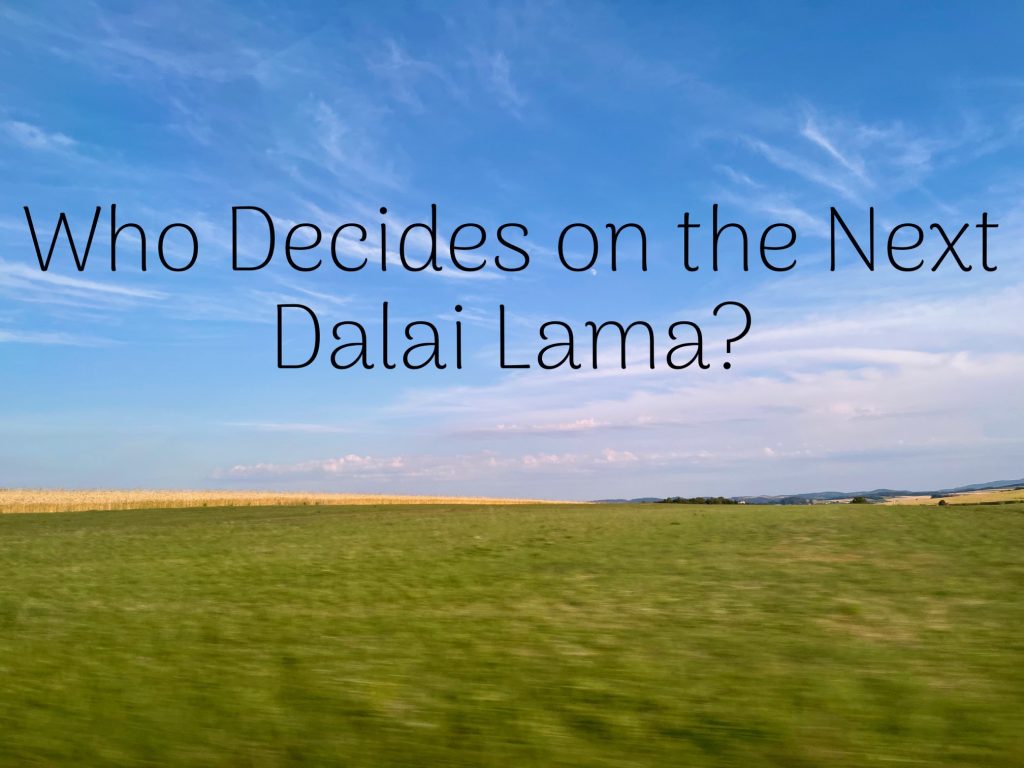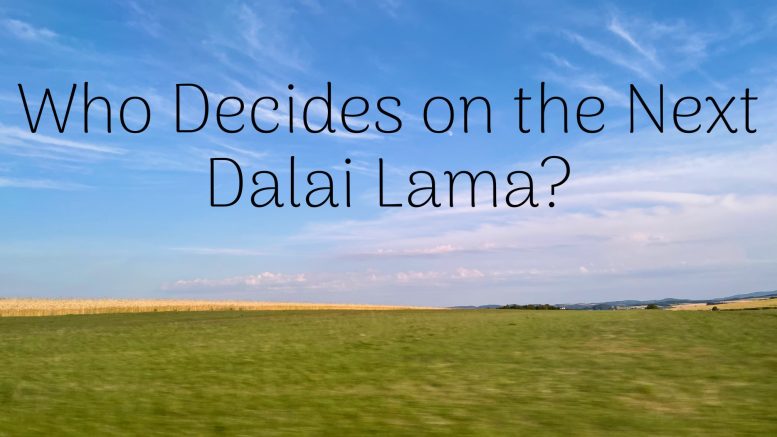
The succession of religious leaders varies greatly across major world religions. In the Catholic Church, for example, a new Pope is elected through a conclave of cardinals, emphasizing the legitimacy and continuity of the institution. In Buddhism, Islam, and other traditions, successors may be selected by senior monks, chosen from family lineages, or designated by previous leaders.
Among these, Tibetan Buddhism’s reincarnation system is unique: after a high lama passes away, believers seek his reincarnation in a young child, who is identified through spiritual signs, tests, and ritual recognition. This process has shaped the religious and political landscape of Tibet for centuries. The Dalai Lama, as the spiritual leader of Tibetan Buddhism’s Gelug school, stands at the center of this practice.
From a global perspective, the question of who gets to decide the reincarnation of the Dalai Lama is not just a religious matter—it reflects the tension between tradition and state authority, between spiritual autonomy and legal governance.
Historical Background: Reincarnation and Political Authority
The system of Dalai Lama reincarnation dates back several centuries. The title “Dalai Lama” originated in the 16th century and was institutionalized with the recognition of reincarnated successors. The traditional search involves spiritual signs, including oracles, dreams, and physical tests to identify the child believed to carry the previous lama’s consciousness.
However, secular political authority has long played a role in these transitions. During the Qing Dynasty, China’s central government introduced the “Golden Urn” system in 1793 to standardize the recognition process and curb corruption or favoritism in selecting reincarnated lamas. While some Dalai Lamas were selected through this method, others were exempted through imperial decrees.
This precedent laid the groundwork for China’s modern claim: that central governments have historically played a decisive role in endorsing or approving the selection of high lamas, including the Dalai Lama.
Current Dispute: China vs. Tibetan Exiles
The debate over the next Dalai Lama pits two sharply divergent perspectives:
China’s Position: Sovereignty and Historical Continuity Beijing maintains that the reincarnation of the Dalai Lama must be conducted under Chinese law and regulations. It argues that since the current (14th) Dalai Lama was recognized with the approval of the central government in the 1940s, his successor must likewise be approved by the state. The Chinese government emphasizes that the issue is not purely religious but also one of national sovereignty and social stability.
To this end, China enacted the 2007 “Measures on the Management of the Reincarnation of Living Buddhas in Tibetan Buddhism,” which stipulates that all reincarnations must be approved through a state-controlled administrative process, particularly for high-impact religious figures. This measure prohibits unauthorized identification of reincarnated lamas, including any attempts by exiled Tibetan leaders to independently select a successor.
Tibetan Exiles: Religious Autonomy and Authenticity In contrast, the 14th Dalai Lama and the Central Tibetan Administration (CTA), based in Dharamsala, India, argue that the reincarnation of the Dalai Lama is a purely spiritual matter that should remain within the Tibetan Buddhist tradition. The Dalai Lama has repeatedly stated that only he and the Tibetan religious community have the authority to decide if and how he will reincarnate.
He has even suggested the possibility of ending the Dalai Lama lineage or reincarnating outside of Chinese territory, which Beijing vehemently opposes. Tibetan exiles warn that any Dalai Lama appointed by the Chinese state will lack religious legitimacy and acceptance among Tibetan Buddhists.
Legal Framework: China’s Regulatory Measures
China’s 2007 regulations formalize its stance through legal codification. Key provisions include:
- All reincarnations must comply with Chinese laws and must not be influenced by foreign entities.
- The Golden Urn system is reaffirmed as a standard method unless exemptions are granted by state authorities.
- A tiered approval process is set depending on the prominence of the religious figure, with the State Council having final authority in significant cases such as the Dalai Lama.
These measures, from China’s perspective, are aimed at preventing religious manipulation and ensuring national cohesion. From a Western standpoint, however, such regulation may appear to infringe on religious freedom.
Constitutional Dimension: State Oversight of Religious Affairs in China and the European Context
From a constitutional perspective, the management of reincarnation in Tibetan Buddhism—particularly in the case of high-profile figures like the Dalai Lama—falls within the framework of religious affairs as defined by China’s legal system. Article 36 of the Constitution of the People’s Republic of China guarantees citizens the freedom of religious belief, but also states that “no one may make use of religion to engage in activities that disrupt public order, impair the health of citizens or interfere with the educational system of the State.”
In this context, religion is granted freedom of belief, but its organizational expressions—especially those with political or cross-border implications—are subject to oversight and legal regulation. Reincarnation, particularly in the case of figures like the Dalai Lama who historically held both spiritual and temporal authority, is viewed not only as a spiritual process but as a matter with national sovereignty and ethnic unity implications. Thus, from the state’s perspective, managing such successions aligns with its constitutional responsibility to safeguard social stability and territorial integrity.
This concept is not without parallel in European history. In many European countries, particularly before the 20th century, state involvement in religious appointments was the norm. Monarchs often held the power to appoint bishops or approve papal envoys; even in modern times, countries like France, Germany, and Austria maintain concordats or legal frameworks defining the limits and recognition of religious institutions. While most European states today emphasize strict separation of church and state, the principle that religious activity operates within the framework of national law remains widely accepted. In this sense, China’s legal approach—though distinct in form—resonates with an older European tradition in which the state retains final authority over religious institutions that intersect with public or political life.
Future Outlook: Dual Dalai Lamas?
As the 14th Dalai Lama ages, the risk of a future succession crisis grows. A widely discussed possibility is the emergence of two rival Dalai Lamas: one recognized by China and enthroned in Tibet, and another chosen by the Tibetan exile community abroad.
Such a situation would mirror the existing dispute over the Panchen Lama, where Beijing’s chosen candidate is recognized within China, while another candidate selected by the Dalai Lama remains missing from public view.
Conclusion: A Crossroads of Tradition and State Governance
The Dalai Lama reincarnation controversy is emblematic of broader questions: who governs religious identity in a modern nation-state? How should traditions rooted in spirituality be reconciled with the demands of legal administration and sovereignty?
For European audiences—particularly in Austria, where religious freedom and historical awareness run deep—this issue invites nuanced reflection. Rather than viewing it solely through the lens of East-West confrontation, it can also be approached as a case study in balancing heritage with governance, autonomy with accountability.
Regardless of the outcome, the Dalai Lama succession will remain a deeply symbolic event, not only for Tibetan Buddhists but also for international observers concerned with the intersection of faith, politics, and law in the 21st century.


Be the first to comment on "Who Decides on the Next Dalai Lama? "